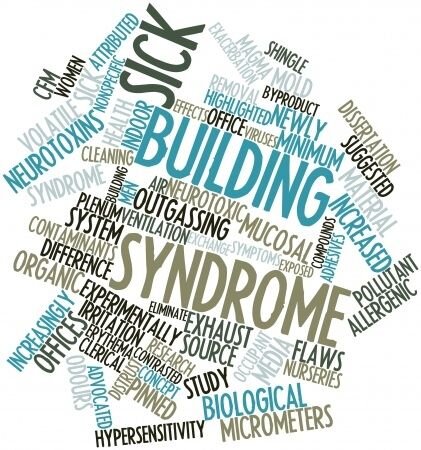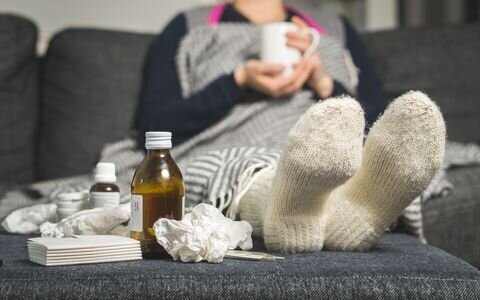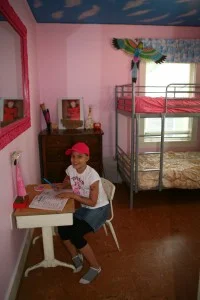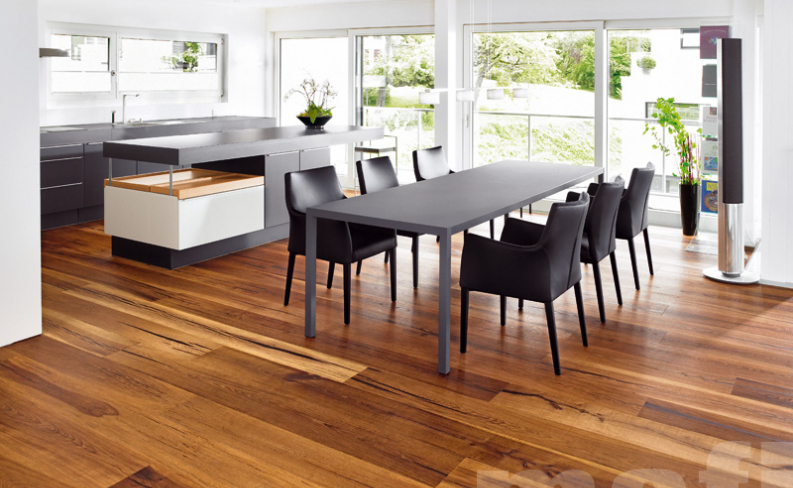Could my newly built or remodeled home affect my health?
If you just can’t shake the flu or cold after moving into your new home or after you remodel.
If you recently bought or moved into a newly built home or remodeled, and feel like you just can’t shake that cold or flu? Sick building symptoms could be the cause and have an negative affect your skin, respiratory, and neurological systems and transition into chronic health issues.
Many builders and developers use materials and products that are cost effective which oftentimes have toxic chemicals in them such as wood flooring, vinyl flooring, cabinetry, baseboards, carpet, paint and more. It may save money in the beginning but will have a huge financial increase in medical bills later on for those exposed to the elements that are off gassing into their systems and airways.
Among the possible symptoms are:
throat irritation
breathing difficulties
tightness in the chest
runny nose
allergy-like symptoms, such as sneezing
burning sensations in the nose
dry, itchy skin rashes
headaches
dizziness
difficulty concentrating
forgetfulness
fatigue
irritability
nausea
body aches
fever
chills
It’s best to have a professional like DesignWell test the air and see what chemicals could be interfering with your health. Formaldehyde from adhesives and wood products can offgas for up to 15 years!
If you are a medical professional, please ask your patients if they have recently remodeled or have moved into a newly built home in the last 10-15 years. We have a full questionnaire for environmental wellness, contact us to set up a consultation so we can help you help your patients thrive better at home.
It is important to have good ventilation and filtration (see our professional VOC reducing and immune system supporting air purifiers).
Combat Indoor Air Pollution with These 5 Hardy Air Purifying Plants
Combat Indoor Air Pollution with These 5 Hardy Air Purifying Plants
Not everyone was born with a green thumb and a knack for taking care of houseplants. Thankfully, there are several popular plants that require very little maintenance to thrive indoors. One of the easiest and most natural ways that you can combat indoor air pollution is by purchasing several of these low maintenance houseplants and placing them in various rooms throughout your home.
Peace Lilies are easy to care for and effective at removing formaldehyde and benzene from the air.
These five plants are easy to care for and will work around the clock to help clean your home air by removing toxic pollutants:
Peace Lilies
Peace lilies are another hardy plant effective in removing formaldehyde from the air along with the chemical benzene. Benzene is commonly found in exhaust from vehicles, detergents, cigarette smoke, building materials, furniture, as well as heating and cooking systems. Exposure to small levels of benzene may cause dizziness, headaches, confusion, and unconsciousness. Benzene is also considered to be a known carcinogen.
Spider Plants
Spider plants have a reputation for being easy to maintain. They also are great at removing formaldehyde, which is one of the most commonly found indoor air pollutants. Formaldehyde is a known human carcinogen; it can cause nasal and eye irritation, increased risk of asthma and allergies, and neurological effects. It is found in numerous household products such as: paint, drywall, adhesives, cosmetics, disinfectants, wood laminate flooring and furniture, and cigarette smoke.
Snake plants
Snake plants are another low maintenance plant. They are effective in removing formaldehyde, xylene, benzene, and trichloroethylene from your indoor air. Trichloroethylene can be found in wood stains, varnishes, finishes, lubricants, adhesives, paint removers, degreasers, and cleaners. It is a known carcinogen that may cause genetic defects and central nervous system damage. Exposure to lesser amounts of this chemical may cause throat irritation, headache, nausea, dizziness, and confusion.
Bamboo palms
Bamboo palms require minimal sunlight and water but will grow larger when placed in direct sunlight. They have been proven to successfully remove formaldehyde, xylene, and trichloroethylene from the air.
Boston Ferns
Boston ferns help filter out formaldehyde and xylene from the air. Xylene is a poisonous solvent used in paints, nail polish, lacquers, adhesives, rust preventers, thinners, gasoline, Street Address and permanent magic markers. Exposure to this chemical may cause dizziness, headache, nausea, and throat irritation. Long term exposure or exposure to larger amounts can result in liver damage, unconsciousness, and respiratory failure.
Connect with us to have our Landscape Designer to order and help you design plant scapes for your indoor space with the above plants and more to purifier and beautify your air! We have an array of gorgeous pots to choose from.
If you are concerned about your air quality, contact us to schedule a test for chemicals, mold, fire, smoke or heavy metals.
10 things you can do at home to boost your WELL BEING
At Designwell Studios we help our clients optimize their environments for well being. No matter what the season, it’s important to boost your well being so you can be the best you can be for yourself and those around you.
It doesn’t have to cost much to infuse a little inspiration and feel good into your day.
Check out DesignWell Studios 10 things you can do at home to improve your air quality and your outlook- the best part? Almost all of these are free.
Go barefoot in your garden and in your home to help with grounding
Open the window when you take a shower to prevent moisture and mold and get some fresh air.
Bring plants closer to your sitting and sleeping areas
Put an inspirational photo in your view when you wake up that makes you smile.
Place your bed and sofa so it they are facing the main door but not in the pathway for positive energy
Meditate with your favorite guided meditation -I recommend the insight timer app , it’s free and has over 30000 guided meditations to choose from- to start your day off on a peaceful note.
Decorate with nature- use branches with little white lights, driftwood and sea shells and rocks for your dining room or fireplace center piece
Get a healthy glow and help heal your air with a salt lamp
Take a bath with epson salts to purify your body help rid negative energy
Switch your devices to night mode at 7pm and turn your phone off or put it on airplane mode at bed time.
SMART HOMES AND YOUR HEALTH
THE FUTURE OF BUILDING
The latest trend in building is Smart Homes.
Is the convenience of technology in built environments worth the risk of potential health issues?
Buildings are being powered up to be sustainable and efficient but are overloaded with technology. How much is too much?
SMART HOMES = SICK PEOPLE
Are the conveniences of technology worth the cost of potential health risks?
Imagine you have designed and built the perfect home for yourself or your clients. You have your project certified as LEED, WELL or LIVING BUILDING CHALLENGE incorporating biophilic design elements. YOU HAVE CHOSEN all the construction materials TO BE healthy AND use a low carbon footprint. No expense has been spared on the flooring, carpets, cabinets, plumbing, etc. The house is beautiful, energy efficient and healthy.
In addition, the house is set up as a smart home. Your doorbell is not only wireless, it can take video, and you can talk to it. You can play any music anywhere in the house with a voice command. Your sprinkler system knows when to go on and off in different places. Even your refrigerator knows how many eggs, how much milk and ice it has. The lights are controlled wirelessly and can even change colors or have them go on when your client isn’t home. The alarm system is wireless. You can even lock or unlock their front door from anywhere in the world using a smartphone. The 5G WiFi router allows instant internet access from anywhere in the home. Even their HVAC system knows when someone is home, turning itself off if no one is around to enjoy the heating or cooling.
Everything in your house can be pre-set or controlled using a smartphone.
Sounds ideal.
Today technology is infused everywhere because convenience is in full demand and manufacturers incorporating it in all their new products. It is all perfect and worthwhile until their child is diagnosed with leukemia or comes down with an autoimmune disease making them electrosensitive.
This is why we like to say that smart homes = sick people.
HOW MUCH IS TOO MUCH?
Where do you draw the line between health and convenience?
Today’s technology is very cool. Who can argue that knowing instantly if your water system is leaking, or knowing if you left the oven on when you leave the house is not a good thing? The problem is that all of this stuff is connected wirelessly to the internet. Gigabytes of information are flying past, around and through the inhabitants of a house usually to a 5g router that transports that information to a cloud. What is wrong with that? Electromagnetic fields (EMFs) are the things that make your smartphone work, and allow your doorbell to communicate with your refrigerator. The question is how much is too much technology and where do you draw the line between health and convenience?
WHAT’S THE HARM?
Leukemia
Lymphoma
Brain Tumors
Weakened nervous system
Melanoma
Breast cancer
Miscarriage
Birth defects
Alzheimer’s disease
Lou Gehrig’s disease
Depression
Nausea
Headache
Fatigue
Anxiety
Dizziness
Mental confusion
Memory loss
Sleep disturbance
Itchy or burning skin
Skin rashes
The International Commission for Electromagnetic Safety (ICEMS) and the National Institute for the Study and Control of Cancer and Environmental Diseases published a report, “Non-thermal Effects and Mechanisms of Interaction Between Electromagnetic Fields and Living Matter” in 2010.
This was an international effort by scientists to compile what was known at that time about the biological effects and mechanisms of action, and included studies showing EMFs create oxidative stress, blood-brain barrier permeability, genotoxic and fertility effects, heat shock (or stress) proteins, changes in the autonomic nervous system (ANS) and in neurotransmitters, and much more.
They say: “In children, we are seeing increases in psychiatric disorders, psychotropic medication use, chronic medical conditions, delinquency, addictions, aggression, sensory integration issues, and disability filings.”
BEHIND THE SCIENCE
There has been numerous studies how EMFs and RFs (wireless, cellular) have been found to cause a large number of illnesses in people, animals and plantlife. The BioInitiative Report synthesizes the key findings of thousands of scientific studies showing biological effects from electromagnetic fields.
The U.K. publication, Electromagnetic Sensitivity and Electromagnetic Hypersensitivity contains references to 1,800 studies showing effects of low-intensity exposures.
There exists decades of military Radio frequency (RF) research showing risk, much foreign research, and even an industry-funded review, “Mobile Telecommunications and Health,” prepared by the Ecolog Institute, which was issued in 2000 and lays out the known risks in great detail, including DNA risks, cancer risks and risks to children.
SECURITY AND PRIVACY
HOW SECURE IS YOUR DOORBELL?
On top of all that science, what happens when someone hacks into your security system? How secure is your doorbell? Do you think someone might be able to get into your email or bank account once they are connected to your home system? Believe it… It can happen.
Norton has even published an article offering tips to help secure all of the numerous smart devices in the modern home.
DESIGNWELL FOR WELL BEING
At DesignWell we consult with homeowner, builders, architects and developers on how to incorporate environmental wellness methods into their projects.
Let’s work together on designing and building homes that support the environment and human health and well being!
We are a growing company with a passion for the health and wellbeing of people. We are NOT anti-technology. We have smartphones. We wrote this on computers connected to the internet.
It is important WHERE your project is located, as well as how you use technology, and what is necessary vs. what seems cool. We have helped enough sick people that we understand what they need to do so they can heal in a supportive and inspiring environment. What would be ideal would be to get them into houses designed so they don’t get sick in the first place!
A healthy dose of interior design for a little girl with leukemia
Portland-based Consulting and Interior Design company, designWELL studios donated its time and services to brighten the home of a young local girl battling Acute Myeloid Leukemia (AML).
UPDATE: Stella is now a healthy college student as of 2019! GO STELLA!
Nine-year-old Stella Monteverde-Cakebread was diagnosed with AML on February 1, 2010. When Michelle Bexelius, owner of designWELL studios, heard of Stella’s plight, she contacted the Monteverde-Cakebread family and offered them complimentary environmental wellness assessment.
By doing something as simple as repainting Stella’s bedroom using high-quality non-VOC paints and primers (Dick’s Color Center and Pratt & Lambert), Bexelius is proving that ecoHealthy can also be ecoBeautiful. “There is always an alternative [to unhealthy products]; you just have to pick your priorities and know what to look for,” she explains.
Michelle checked the electromagnetic frequency (EMF) levels, moved Stella’s bed, and checked for lead in the windowsills. On the advice of designWELL studios, the family is also getting new, healthy mattresses, pillows and bedding thanks to (Eclectic Home), sustainable cork floors (Eco Haus) and custom designed textiles (cool cotton). The bedroom was cleared of clutter, the stuffed animals were minimized and the space was organized to create a harmonious haven.
We also want her room to resonate with her style making it fun for an almost 9 year old and her 4 year old sister to call their own. Michelle designed curtains and a duvet cover and pillow to brighten the room. Melamine furniture and plastic storage containers were replaced with solid wood pieces to improve the indoor air quality.
It will be a bright moment when Stella sees her room for the first time. We will be there smiling too knowing we helped improve the health of her room so a little girl can heal and grow up and fulfill her dreams.
New case study why sourcing healthy wood flooring saves money and prevents future health issues
New case study: Why sourcing healthy wood flooring saves money and prevents future health issues
By Michelle Bexelius
Environmental Wellness Design Director
Designwell Studios
1/14/19
When sourcing flooring options for interior design projects there are many to choose from that span the spectrum depending on project cost and style. Flooring eats up a large part of the budget of a project, around 10%. While trying to remain on budget and keep with the style of the project many sources for wood flooring fall short when it comes to health and safety for the people inhabiting the space.
Many wood flooring companies have pollutants like formaldehyde in their products as well as adhesives. The pollutants in formaldehyde can off gas up to 15 years in an indoor environment. The people who come into contact with formaldehyde acutely or long term are at risk for mild to severe health issues. Being an environmental designer trained in building biology, healthy building and remodeling focusing on indoor air quality and electromagnetic fields, I have seen hundreds of cases of environmental toxin exposure and a large percentage have come from pre engineered wood products containing formaldehyde.
This is a case study on why sourcing healthier wood flooring products is vital in preventing chronic health issues like asthma in children after family who moved into a newly built home that proved to be toxic from formaldehyde adhesives in pre engineered wood flooring.
A few years ago a family of 4 (mother, father, baby, toddler) moved into a brand new 3,000 square foot home with new wood floors, cabinetry and carpet and other traditional building products. What happens to them is something you would never wish upon anyone close to you. The children, 8 months old and 2 years and their mother were continually sick with cold symptoms that lasted for more than two months, unusually long after cold and flu season. This was when I was contacted to perform indoor air quality testing to find out if there was something in their home making them sick. After walking in the door I was instantly struck with a strong load of a chemical smell, the room climate was stagnant and heavy. I instantly felt lightheaded and anxious.
After the test results came back from the lab, it was clear there were elevated levels of formaldehyde, 87 ppb (parts per billion) to be exact. Levels 0-16 ppb are the range within acceptable limits. We then determined the source of formaldehyde was coming from the adhesives underneath the pre-engineered wood flooring. The builder was alerted and said they would help mitigate the problem. They installed a new heat recovery ventilation (HRV) unit to help move the air, but the company didn’t balance the indoor air quality correctly, nor install it correctly and they ended up putting in an electrostatic air cleaner that produced a significant amount of ozone. I noticed this when I visited the home again to consult and I couldn’t even be in the home due to the heavy amount of pollutants in the air. I recommended the reinstall the HRV system using a more experienced Heating and Cooling (HVAC) company as well as removing the electrostatic cleaner.
I did recommend to my client that they could replace the flooring with healthy wood floors but they had already spent so much money on hotels, doctor’s bills, consultants, testing and appliances to help their environment. If they had replaced the wood floors with healthier wood floors and adhesives and removed the carpets they would have had a much healthier environment and saved a lot of money. They thought that all new homes off gassed and that their new home would do so within a few months and didn’t realize it would take up to 15 years and have their baby now a toddler suffer from chronic asthma.
My clients ended up taking the builder to court to educate, create awareness and redeem the money lost that was spent trying to mitigate a problem they didn’t sign up for. They won their case and now the builder hopefully has awareness of using healthier building products and materials in their future projects.
Now is the perfect time as a interior designer and architect to source healthier products and materials for your clients health. Choose products and materials that are certified, healthy and safe for humans and the environment.
Cases like these can be prevented from the start of a project by sourcing healthier materials and products. It is also important to test the indoor air quality after installation to ensure a healthy environment. As an environmental designer and after indepth research, I highly recommend using mafi wood floors for future building and renovation projects.
Contact DesignWell Studios if you have wood floors you’d like to test and see if they are off gassing formaldehyde or other toxins.
Safety and Electromagnetic Fields = Location. Location. Location
Electromagnetic Fields = LOCATION LOCATION LOCATION
Is your home near the following: airport, electric power plant, a foundry, radio/tv tower, a cell tower, power lines/transformers, any industrial plants, a farm, a crematorium, hazardous waste site, a superfund site, nursery, vineyard, orchard, golf course, high traffic highways roads... you want to test your indoor air quality and electromagnetic fields and radio frequencies (wifi).
These outside elements play a bigger role in your life than you think. The golf course is green and beautiful yet they could be spraying pesticides on their grass to make it look perfectly green which blows into the air up to a mile.
Cell towers and power stations are necessary for electricity and communication but if they are too close they could have adverse health effects on your and your loved ones. Each location is different, that’s why it’s important to test first.


















